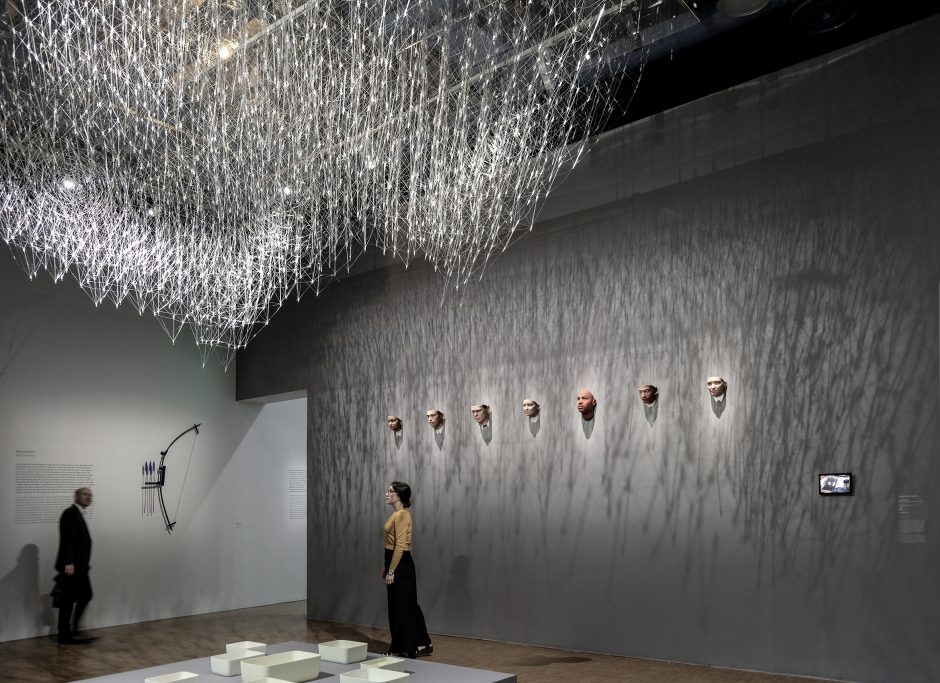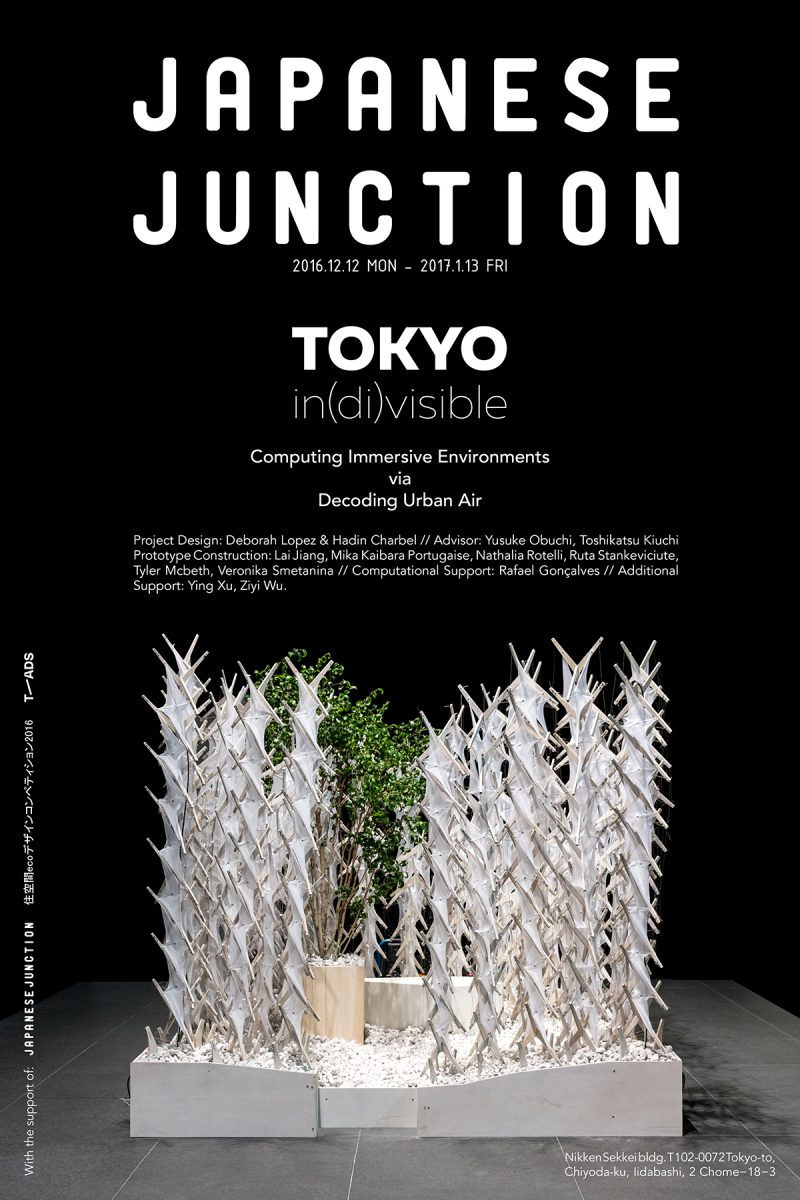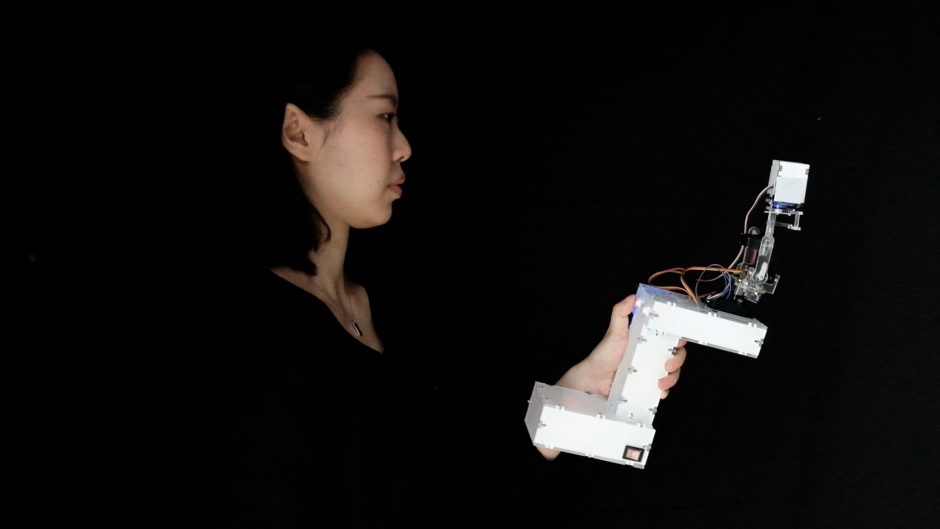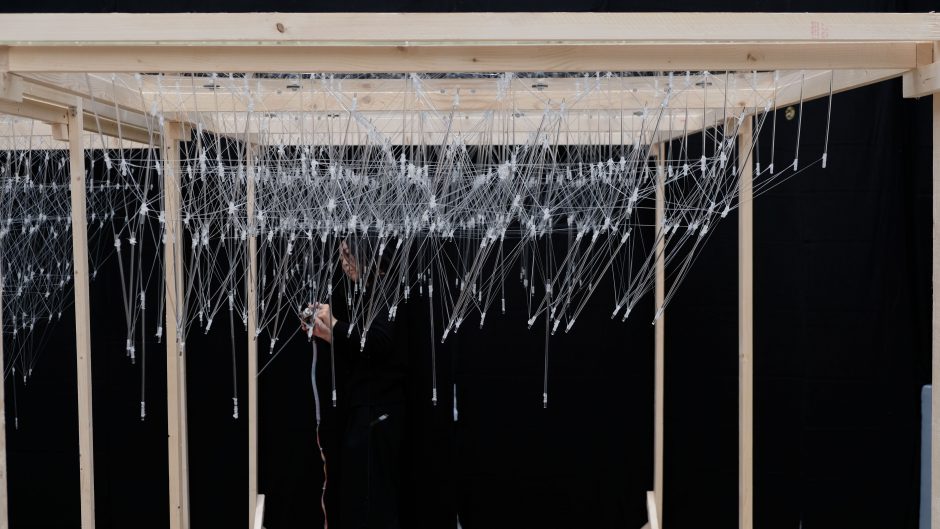DFL Colloquium
Where does design start and end? The role of architects in the age of advanced computation and AI
Thursday 22 March 2018, 17:00-19:30 (doors open at 16:30, admission free) Lecture Theatre 15, Faculty of Engineering Building 1, The University of Tokyo Hongo Campus
Language – English
‘Which jobs will be replaced by AI and robots?’ This type of catchy headline has become increasingly common in most news outlets, effectively grabbing viewers’ and readers’ attention. While presented as either something to embrace or refuse, it is undoubtedly imminent. Should architects be concerned? Could architects’ creative design processes also be done by AI and robots? If AI and robots will perform creative design processes better, then what will humans do? In other words, what does it mean to say, designed and made by humans?
The aim of this colloquium is to discuss the state of design culture specifically from the point of view of ‘making physical stuff.’ Computational capabilities have already dramatically altered the way manufacturing industries operate and deliver products with high degrees of efficiency and productivity through automation, robotic fabrication and building information modelling. Today, these methods and tools have become integral parts of architectural production processes, being both taught and practiced. This event will explore, and discuss the potentials and concerns for today’s designers and makers by asking where do design processes start and end?
Session 1 Presentations 17:00-18:20
Yusuke Obuchi Associate Professor, Department of Architecture, The University of Tokyo
Hannes Mayer Senior Researcher, Director of Education, Gramazio Kohler Research, ETH Zurich
Lisa Iwamoto Professor, Department of Architecture, University of California, Berkeley
Session 2 Panel Discussion 18:30-19:30
Moderator Thomas Weaver TU Delft
Curatorial Presentation by Fumio Nanjo Director, Mori Art Museum
Organised by The University of Tokyo Advanced Design Studies (T_ADS) The University of Tokyo Digital Fabrication Fab (DFL)
DFLトーク・セッション Where does design start and end? The role of architects in the age of advanced computation and AI
2018年3月22日(木)17:00-19:30 (開場16:30) 東京大学本郷キャンパス工学部1号館15号講義室 (定員100名先着順 入場無料)
*使用言語:英語
デジタル機械・IT技術の発展に伴い、ものづくりにおける生産が設計プロセスと結びついて、従来のものづくりにあった人間との関係が希薄になりつつあります。建築においても、設計と施工が一体化することで、施工は「つくるもの(創造)」から「解釈のない/できない組み立てる仕事」に変わりつつあります。
他方、リノベーションのような、既存のデザインに手を加える設計や、解体後の廃材の活用に係るデザインなど、これまでの「設計=かたち/空間のデザイン」だけではない時代になり、設計、ひいては建築家の役割の再定義が求められています。
このトーク・セッションが着目するのは、人間と設計・施工プロセスとの関係が変わりつつある時代における「デザインのはじまりとおわり」です。
Session 1では、それぞれ異なるかたちでデジタル機械・IT技術の応用を試みる建築家や研究者の方々よりお話を伺います。Session 2のパネル・ディスカッションでは、著述家かつ歴史家であるデルフト工科大学のThomas Weaver氏、森美術館館長の南條史生氏にコーディネート頂きながら、デジタル・AI時代における設計と建築家の役割について議論します。
Session 1 Presentations 17:00-18:20
小渕 祐介 東京大学大学院工学系研究科建築学専攻 准教授 Hannes Mayer スイス連邦工科大学チューリッヒ校Gramazio Kohler Research 上席研究員 教育長 Lisa Iwamoto カリフォルニア州立大学バークレー校建築学科 教授
Session 2 Panel Discussion 18:30-19:30
Moderator Thomas Weaver デルフト工科大学
Curatorial Presentation by 南條 史生 森美術館 館長
主催 東京大学建築学専攻Advanced Design Studies (T_ADS) 東京大学建築学専攻Digital Fabrication Fab (DFL)



 TーADS is proud to announce the work of alumni Kevin Clement and Anders Rod is being featured at the Centre Pompidou Museum in Paris, France. The exhibit, originally conceived as the Harvesting Plasticity graduate research project, is a hanging work featured as a part of the Mutations/Créations event. The event aims to bring together design, architecture, and music.
TーADS is proud to announce the work of alumni Kevin Clement and Anders Rod is being featured at the Centre Pompidou Museum in Paris, France. The exhibit, originally conceived as the Harvesting Plasticity graduate research project, is a hanging work featured as a part of the Mutations/Créations event. The event aims to bring together design, architecture, and music.
This work is included as a part of the Imprimer le Monde exhibition, a collection of works exploring the use of the digital for 3D creations.
Mutations / Créations Imprimer le Monde, A Collective Exhibition Centre Pompidou, Paris, France 15 March – 19 June, 2017 Galerie 4, level 1
(Mutations / Créations details via Centre Pompidou)
Project Credits University of Tokyo Advanced Design Studies Unit (TーADS) Professors: Yusuke Obuchi, Kengo Kuma, Manabu Chiba Core research: Kevin Clement, Anders Rod Project Coordinators: Kevin Clement, Shuntaro Nozawa Project Team: Jiang Lai, Deborah Lopez, Hadin Charbel, Mika Portugaise, Chen Xiaoke, Ruta Stankeviciute, Hirokazu Tei, Wu Ziyi, Alric Lee, Nathalia Rotelli, Emi Shiraishi, Veronika Smetanina, Tom Moss, Yang Ao, Tyler Mcbeth
Jun Sato Lab Professor: Jun Sato Project Team: Mika Araki, Ying Xu
Video Production: Deborah Lopez, Hadin Charbel
Special thanks to: Kengo Kuma and Associates, The University of Tokyo Department of Architecture École Spéciale d’Architecture
Gallery of Construction Images
Timelapse Video of Installation (courtesy Centre Pompidou)
2016年DFLパビリオンComputational Clayエキシビション
場所:鹿島建設技術研究所 1階展示スペース (アックセス) 開催:3月14日(火)〜24日(金) 09:00-17:00(平日のみ、最終日は午前中のみ) ※ 一般に開放されているスペースです。どなたにでもご覧頂けます。
COMPUTATIONAL CLAY 2017 PAVILION DISPLAY & PANEL EXHIBITIONのご案内(鹿島)
Computational Clay Exhibition – Pavilion and Panel Display Tuesday March 14th – Friday March 24th Entrance, Ground Floor, Kajima Technical Research Center (Chofu, Tokyo) 09:00-17:00, weekdays only Entrance free of charge Kajima Technical Research Institute Access Information
 ツギ_ツギプロジェクト第2弾、公開セミナーのお知らせ
ツギ_ツギプロジェクト第2弾、公開セミナーのお知らせ
おかげさまで、Design Think Tank(DTT)では、先の2月4日、5日に共同研究の一環として台東区の三筋・小島・鳥越において、街の方々と共同で行う社会実験イベント 『ツギ_ツギ #01 白米モノヅクリ自転車おかず』 を無事執り行うことができました。
今般、イベントを振り返りつつ、今後のツギ_ツギプロジェクトの可能性を模索する場としてゲスト講師にgraf代表服部滋樹氏、(株)ドコモ・バイクシェア坪谷寿一氏の2名をお招きした公開セミナーを開催する運びとなりました。
住民、商店街、事業者、大学等、様々な立場のプレイヤーが集う、意見交換の場になればと考えております。ぜひ皆様にもお越しいただければ幸甚です。
尚、席に限りがございますので、要予約・先着順とさせていただいております。予約に関しては、名前・所属・メールアドレスを明記の上、tsugi.tsugi.jp@gmail.comまでご連絡ください。予約数が一般来場者20名に達し次第、予約を打ち切らせていただきます。予めご了承ください。
—— 公開セミナー概要 ——
日時:3月5日(日)17時開場 17:15-19:00 場所:鳥越会館(東京都台東区鳥越1-19-1)
「日常から発見する都市づくり」 おかず横丁から考えるオルタナティブな東京の未来
前半:ゲストレクチャー(17:15-18:15) 服部滋樹(graf代表、クリエイティブディレクター、デザイナー) 坪谷寿一(株式会社ドコモ・バイクシェア代表取締役社長)
後半:公開ディスカッション(18:15-19:00) 服部滋樹(graf)、坪谷寿一(ドコモ・バイクシェア) 隈研吾(東京大学)小渕祐介(東京大学)、楠本正幸(NTT都市開発)、篠原宏年(NTT都市開発)、四方裕(新建築)
主催:東京大学建築学専攻Advanced Design Studies 共催:NTT都市開発(株)、(株)新建築
Nikken Sekkei bldg.
Tokyo, Chiyoda, Iidabashi, 2-18-3
Tokyo in(di)visible hypothesizes to make current the perceptions of space as defined under opposing terms of interior/exterior and precise/uncontrollable. Through a networked field of architectural prototypes, an exterior space can be created and defined as a function of the evolving environmental conditions in which it is situated, removing undesirable airborne particles as a by-product of the enhancement of exterior qualities.





ARCHINEERING DESIGN EXHIBITION, 2013
Project Team : Christopher Sjoberg, Yeonsang Shin, Miguel Puig, Zhang Ye, Ana Luisa Soares, Ma Sushuang, Tong Shan, Andrea Trajkovska, Quangtuan Ta, Wei Wang, Anders Rod, Benjamin Berwick, Qiaomu Jin, Fawad Osman, Yanli Xiong, Andrea Bagniewski, Kevin Clement, Ornchuma Saraya, Minjie Xu
Yusuke Obuchi, Associate Professor Jun Sato, Associate Professor Toshikatsu Kiuchi, Course Assistant So Sugita, Course Assistant Hiroaki Yoshida, Course Assistant





















